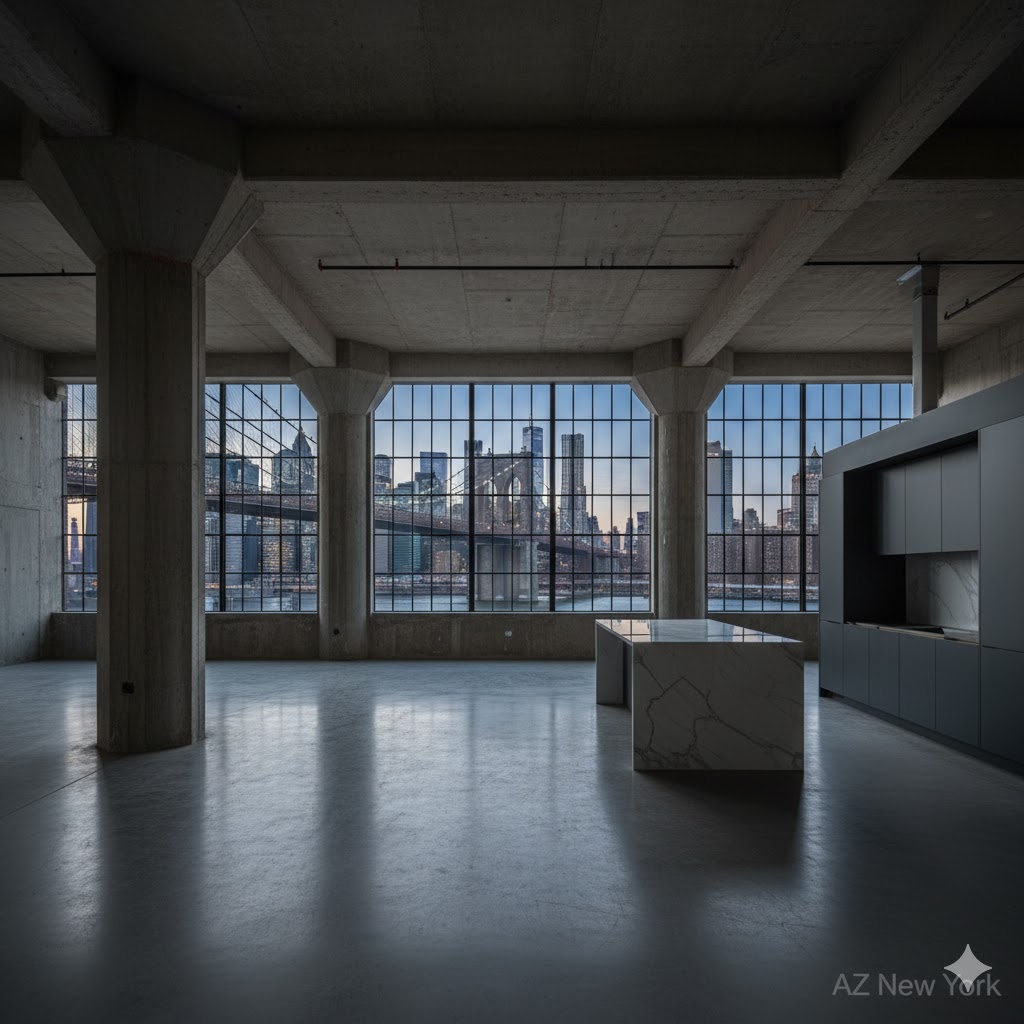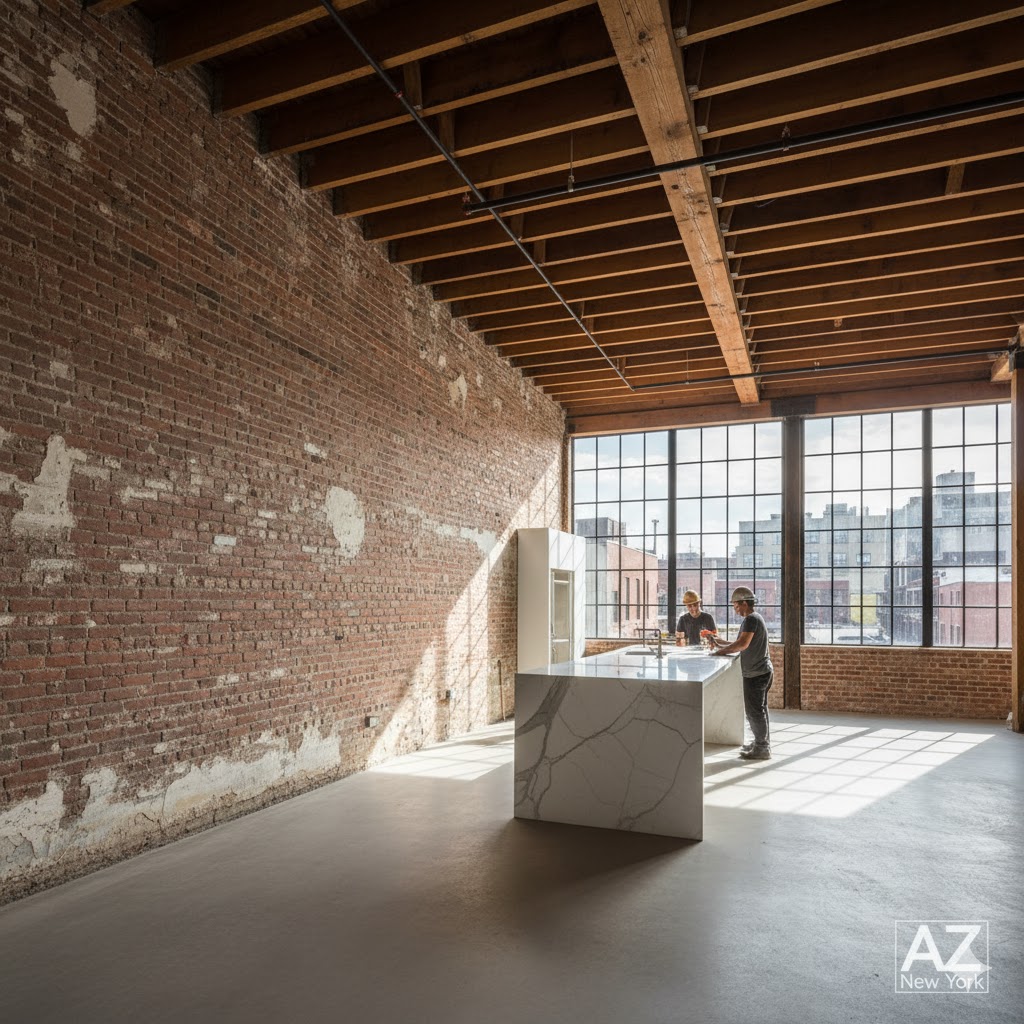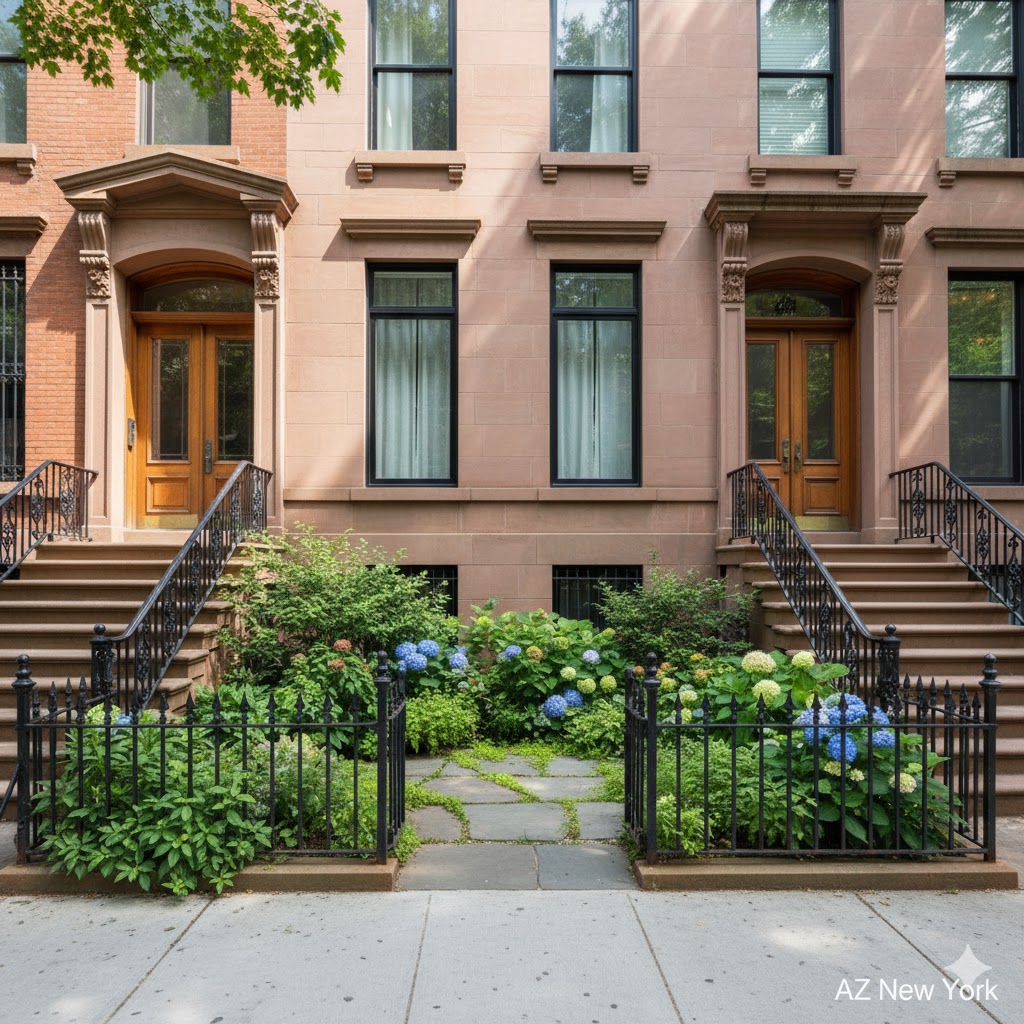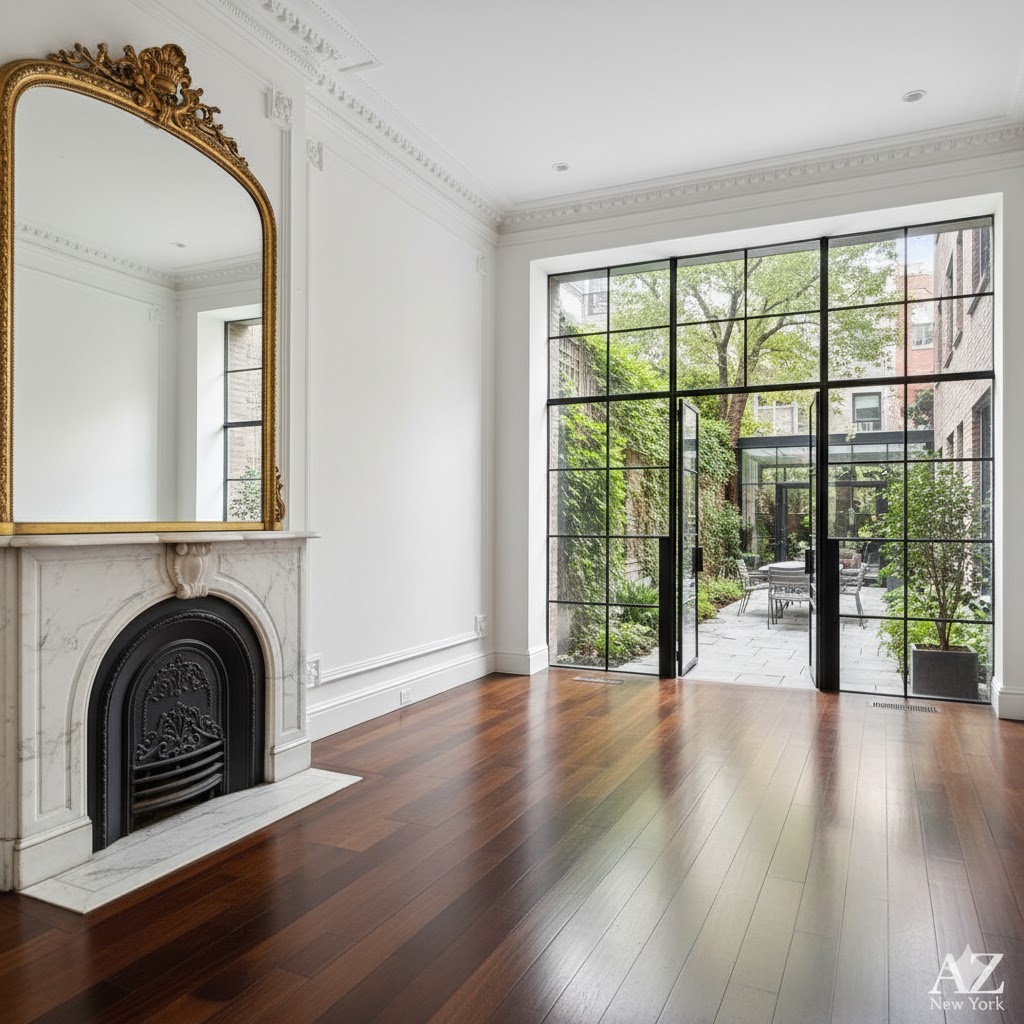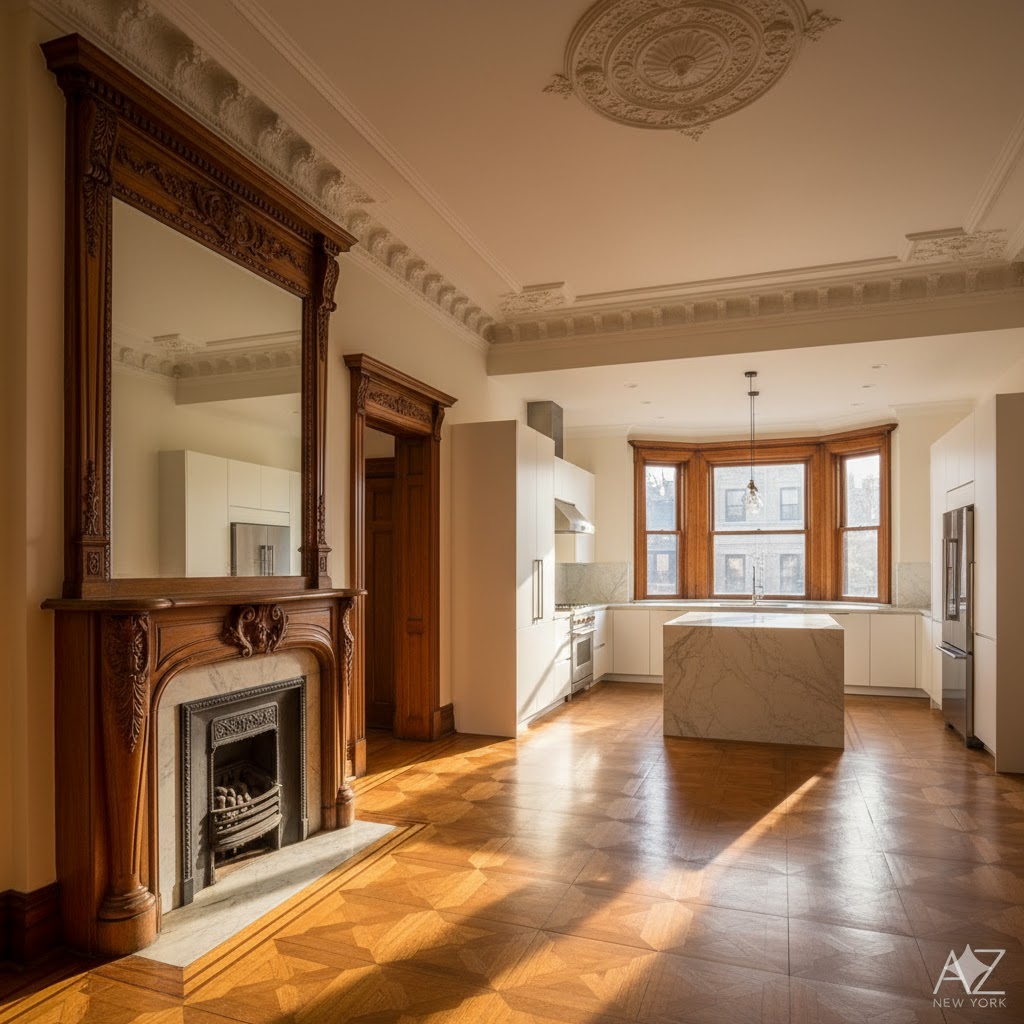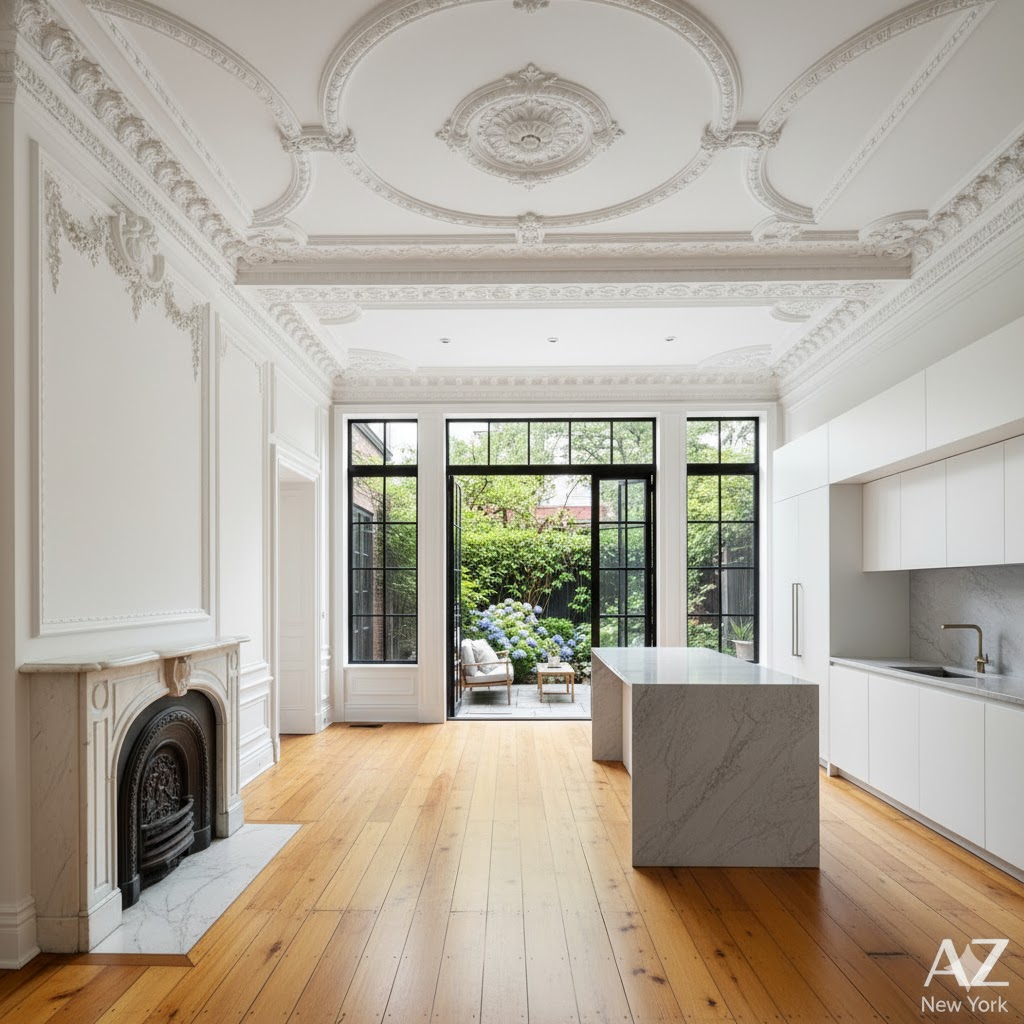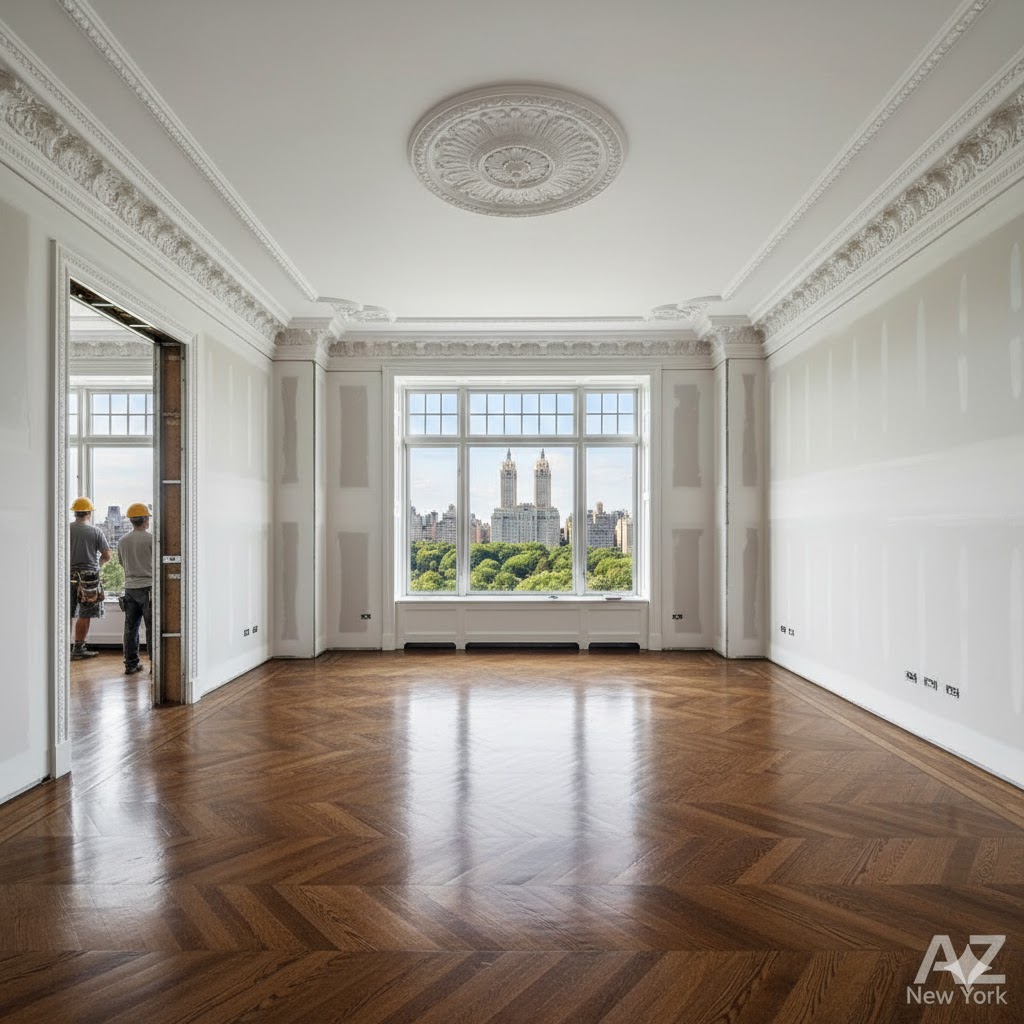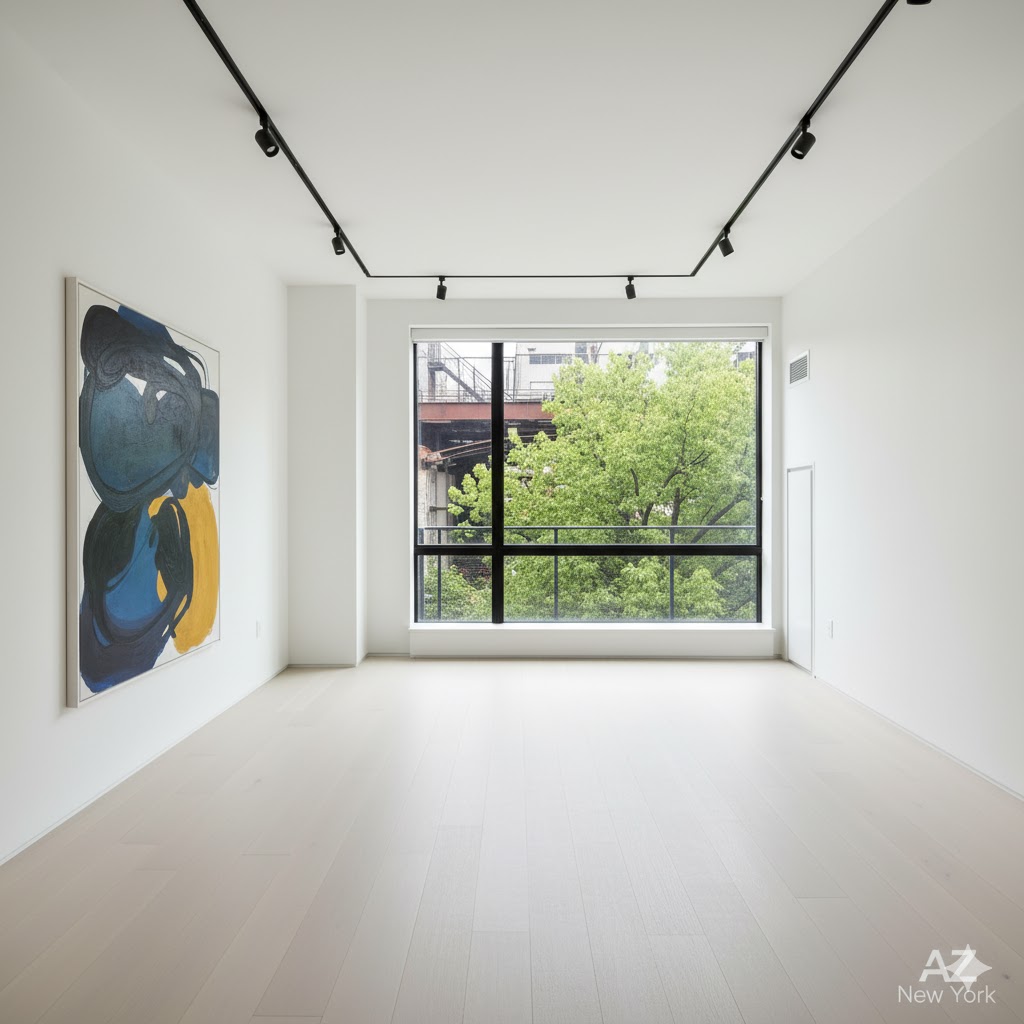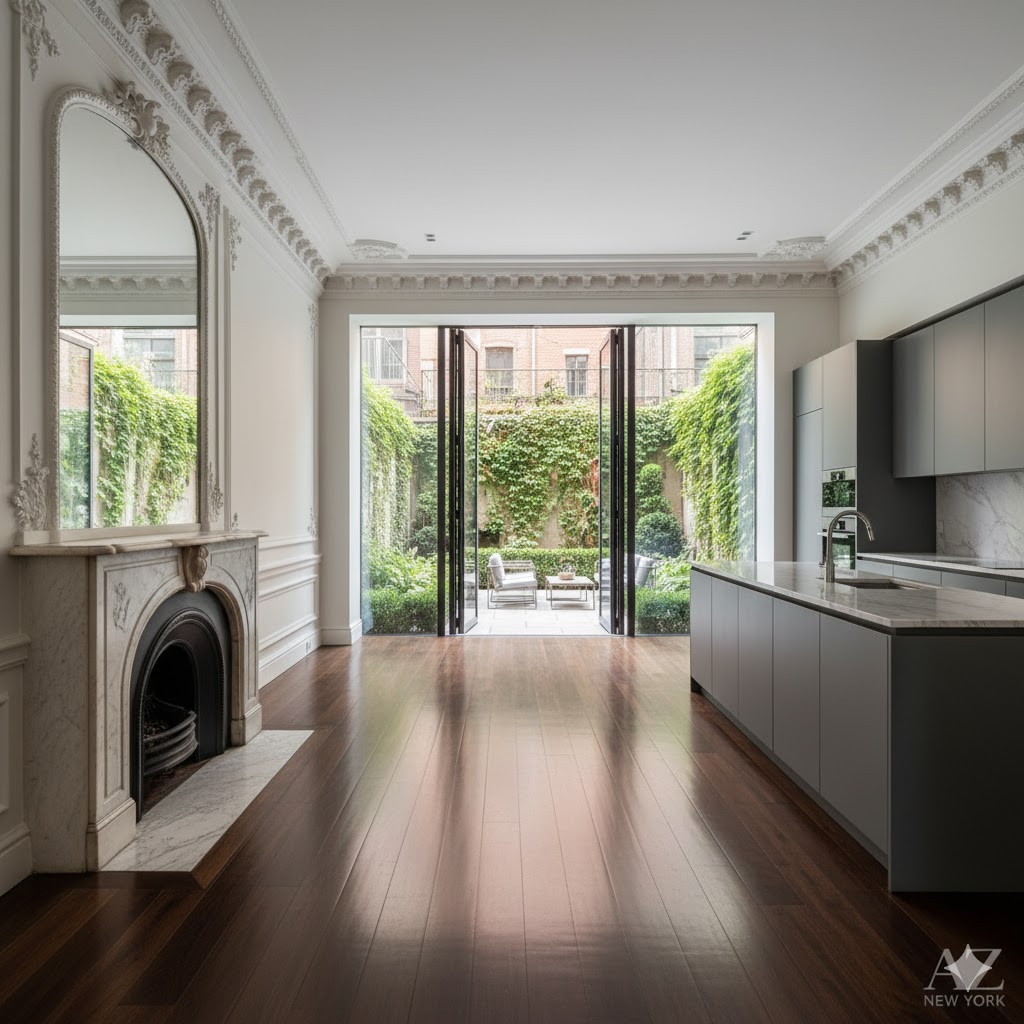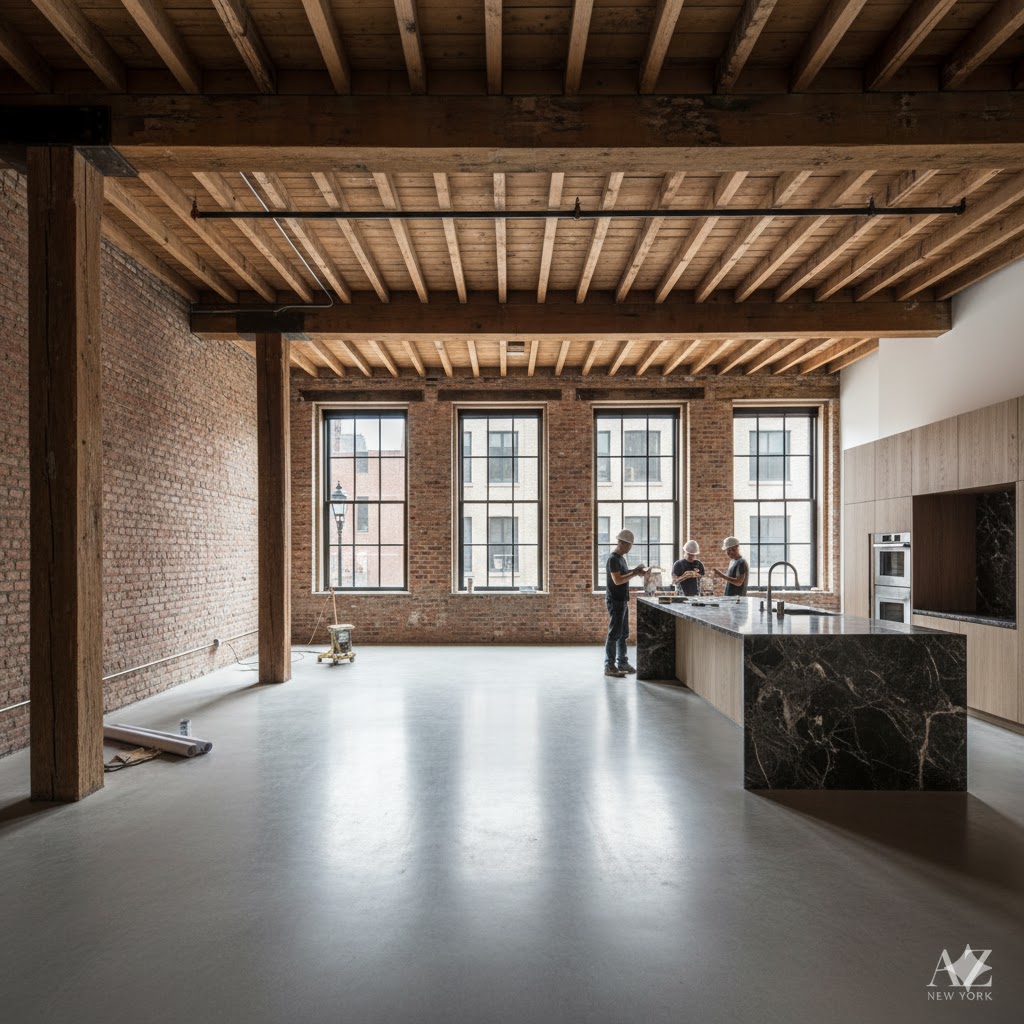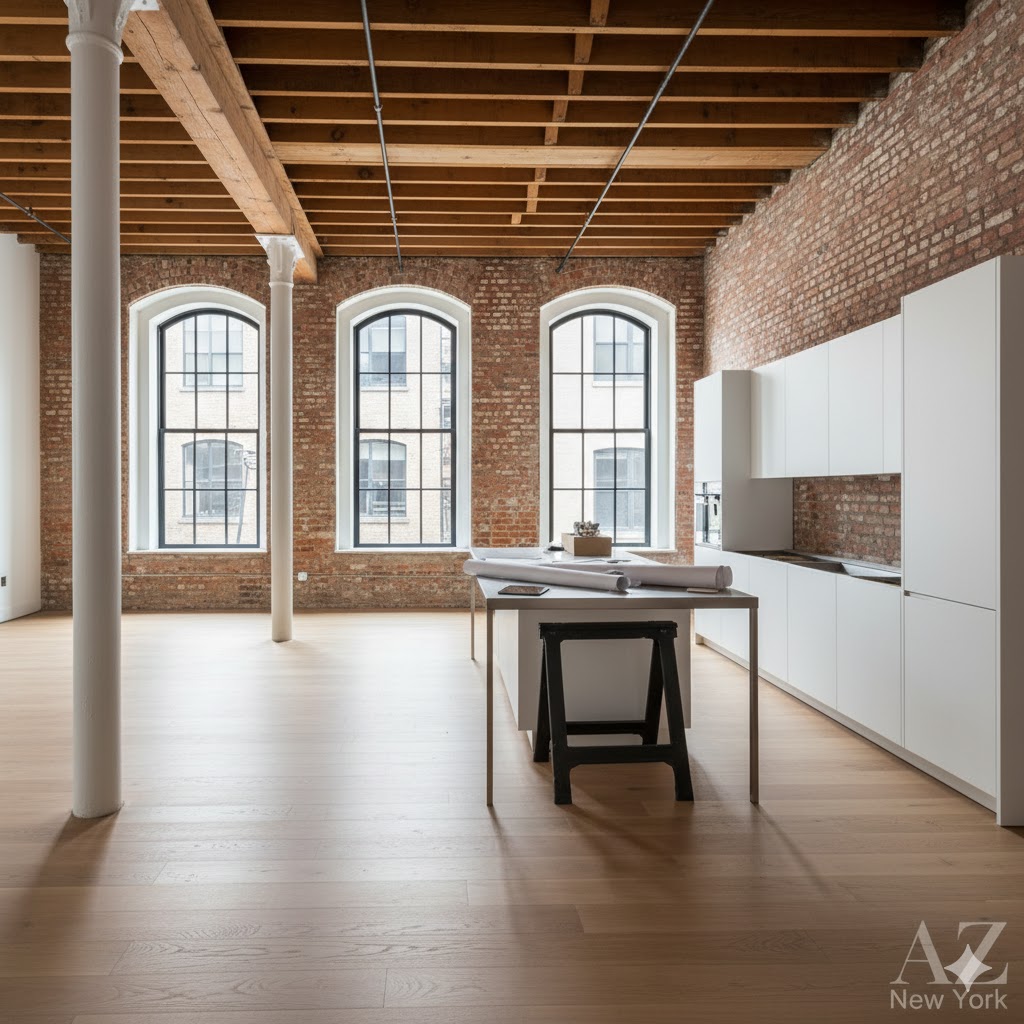Buying Old Townhouses in Harlem (Mount Morris Park), NYC
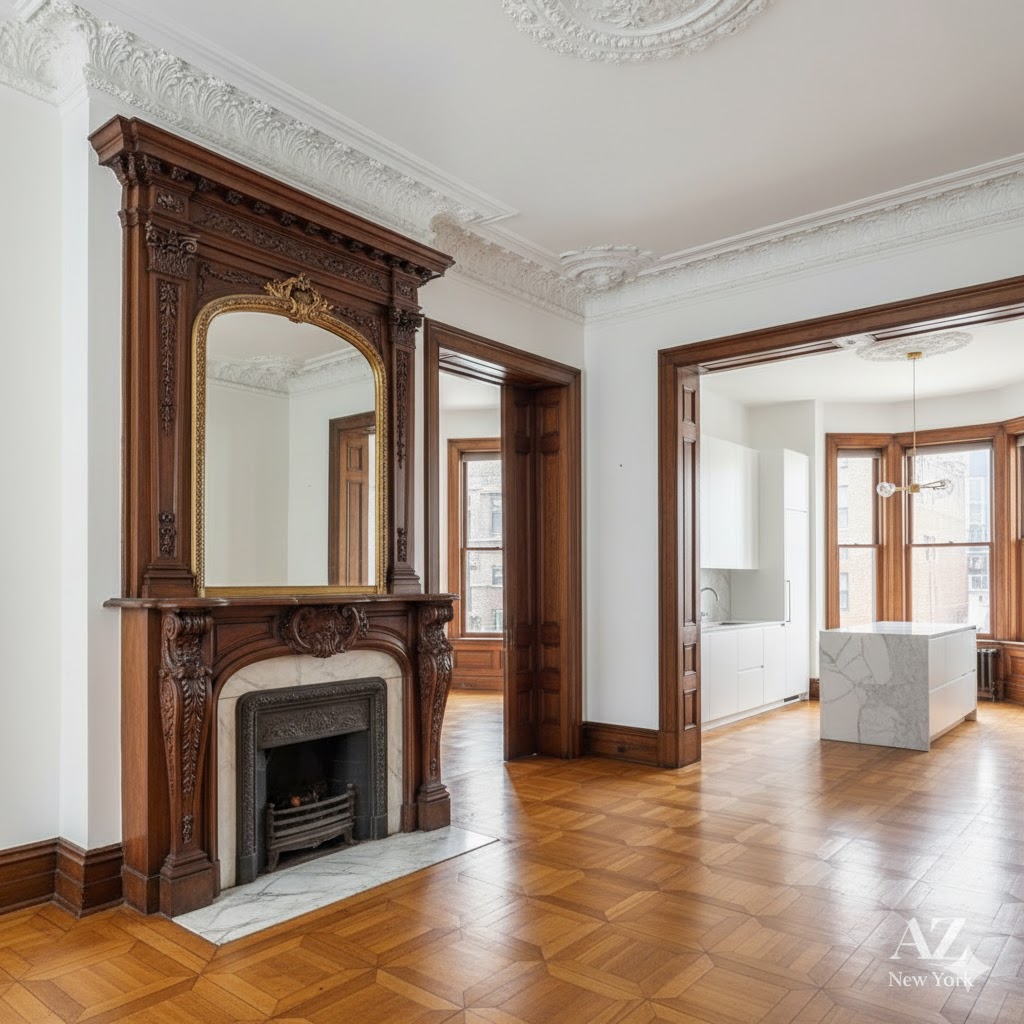
Buying Old Townhouses in Harlem (Mount Morris Park), NYC: A Guide to Renovating and Reselling for Profit
Harlem, and specifically the Mount Morris Park Historic District, represents one of the most compelling townhouse investment opportunities in Manhattan.
This prestigious enclave, centered around Marcus Garvey Park (formerly Mount Morris Park), boasts a stunning concentration of Gilded Age brownstones and limestones that rival the Upper West Side in grandeur.
The strategy: acquire grand, 4-5 story townhouses for renovation, capitalizing on “relative value” to deliver a luxury product with significant upside.
🏙️ Why Invest in Mount Morris Park?
This is “Brownstone Manhattan” at a fraction of the cost of “downtown.” An unrenovated, 20-foot-wide, 5,000 sq ft townhouse here might be $3.5M, while a *identical* house on the UWS would be $8M+. This “value gap” is the entire play.
The architecture is world-class (think Romanesque Revival, Queen Anne), and the tree-lined streets are magnificent.
The target buyer is a HNW individual or family seeking a massive single-family home (or owner’s duplex) who recognizes the long-term value and cultural richness of the neighborhood.
🔍 Comparative Table: Harlem Townhouse vs. Upper West Side Townhouse
| Feature | Harlem Townhouse (Mount Morris Park) | Upper West Side Townhouse (CPW block) |
|---|---|---|
| Acquisition Cost | High (e.g., $2.5M – $4M for unrenovated). | Astronomical (e.g., $7M – $12M for unrenovated). |
| Typical Scale | Grand. 18-22 ft wide, 4-5 stories, 4,500-6,000 sq ft. | Grand. 18-22 ft wide, 4-5 stories, 4,500-6,000 sq ft. |
| Renovation Hurdle | Extreme. Mount Morris Park is a strict LPC district. Homes are 130+ years old. | Extreme. UWS is a very strict LPC district. |
| Resale Value (Renovated) | $6M – $9M+. A rapidly rising ceiling. | $15M – $25M+. An established, “blue-chip” ceiling. |
| Profit Potential (Flip) | Very High. The “value gap” provides a large margin for a high-quality restoration. | High, but a much larger capital outlay and (often) a lower percentage margin. |
🔨 3 Case Studies: Successful Harlem Flips
- The Single-Family Conversion: An investor group purchased a 5-story, 20-ft wide limestone (as 5 units) for $3.2M. Action: A $3M, 3-year gut renovation. They converted it to a single-family home, adding an elevator, a 1,000-bottle wine cellar, and a full-floor master suite. Result: Sold for $8.5M. Net profit (pre-tax): ~$2.3M.
- The “2-Family” Sweet Spot: A developer bought a 4-story brownstone for $2.8M. Action: A $1.5M renovation. They created a luxury 4-bed “owner’s triplex” (parlor, 2nd, 3rd floors) and a high-end 2-bed “garden rental” unit (to cover $8k/mo of a mortgage). Result: Sold for $5.5M. Net profit: ~$1.2M.
- The “Doctor’s Row” Flip: A couple bought a 19-ft wide brownstone on a prime block for $3.1M. Action: A $1.2M “cosmetic-plus” reno. The house was already a 1-family. They focused on a new Smallbone kitchen, 5 new marble baths, and central A/C. Result: Sold 12 months later for $5.9M. Net profit: ~$1.6M.
💡 Pro-Tips for Renovating in Harlem
- Preserve the “Gilded Age” Woodwork: Like in Brooklyn, the value is in the details. Harlem townhouses are famous for their original, 1890s-era oak, cherry, and mahogany woodwork, pocket doors, and fireplaces with ornate tiles. This *must* be restored.
- The “2-Family” is the Smartest Product: While single-family mansions grab headlines, the “owner’s duplex/triplex + garden rental” is the most in-demand, liquid, and profitable product. It opens the buyer pool significantly.
- LPC is Your Boss: The Mount Morris Park Historic District is extremely strict. They will scrutinize everything from your front stoop restoration to your (wood, not vinyl) windows to your rooftop mechanicals. Hire an LPC-specialist architect from day one.
- Proximity to the 2/3 Express Train is Key: Buyers are paying for “Manhattan convenience.” A property’s proximity to the 125th St 2/3 express train (a 10-minute ride to Times Square) is a major price driver.
✨ Harlem Real Estate: Did You Know?
The Mount Morris Park Historic District was part of NYC’s “Gilded Age” boom. Developers in the 1880s and 1890s hired the era’s best “starchitects” (like McKim, Mead & White) to build entire blocks of speculative townhouses. They were designed to be grander and wider than those on the UWS to lure wealthy families “uptown”—which is why the architectural quality of these homes is, in many cases, superior to their downtown counterparts.
❓ Frequently Asked questions (FAQ)
Q: Is Harlem a “blue-chip” investment like the Upper West Side?
A: It is rapidly becoming one. For 20 years, it was an “emerging” market. It has now “emerged.” The $5M – $9M resale market is established and growing. While it may not have the “blue-chip” stability of the UWS, its growth potential is arguably much higher.
Q: What is the biggest challenge when renovating in Harlem?
A: Underestimating the age. These homes are 130-140 years old. All plumbing (including the main sewer line to the street), all electrical (including the service line), and all structural joists must be inspected and likely fully replaced. A “cosmetic” flip is almost never possible.
Q: What’s the biggest mistake investors make here?
A: “Downtown” Designs. A buyer in Harlem is *not* looking for a minimalist, white-box “SoHo loft” interior. They are paying for the historic grandeur. Ripping out the original grand staircase, ornate mantels, and woodwork to create an “open plan” is the fastest way to destroy the property’s value.
📍 GEO Context
- City: New York City
- Neighborhood: Harlem (Mount Morris Park)
- Borough: Manhattan
- Category: Luxury Townhouse Investments
For more on Gilded Age townhouse restoration and the Mount Morris Park Historic District, visit AZ New York.
Keywords for your next internet searches
Harlem real estate, Mount Morris Park Historic District, NYC townhouse renovation, fix and flip Manhattan, 10026 zip code, 10027 zip code, Gilded Age architecture, Romanesque Revival, single-family conversion, 2-family townhouse,
case studies real estate, AZ New York, Manhattan luxury real estate, restoring original woodwork, McKim Mead & White, Marcus Garvey Park, 2/3 express train, UWS vs Harlem, relative value investing, Apollo Theater, Smallbone kitchen, Harlem brownstone

